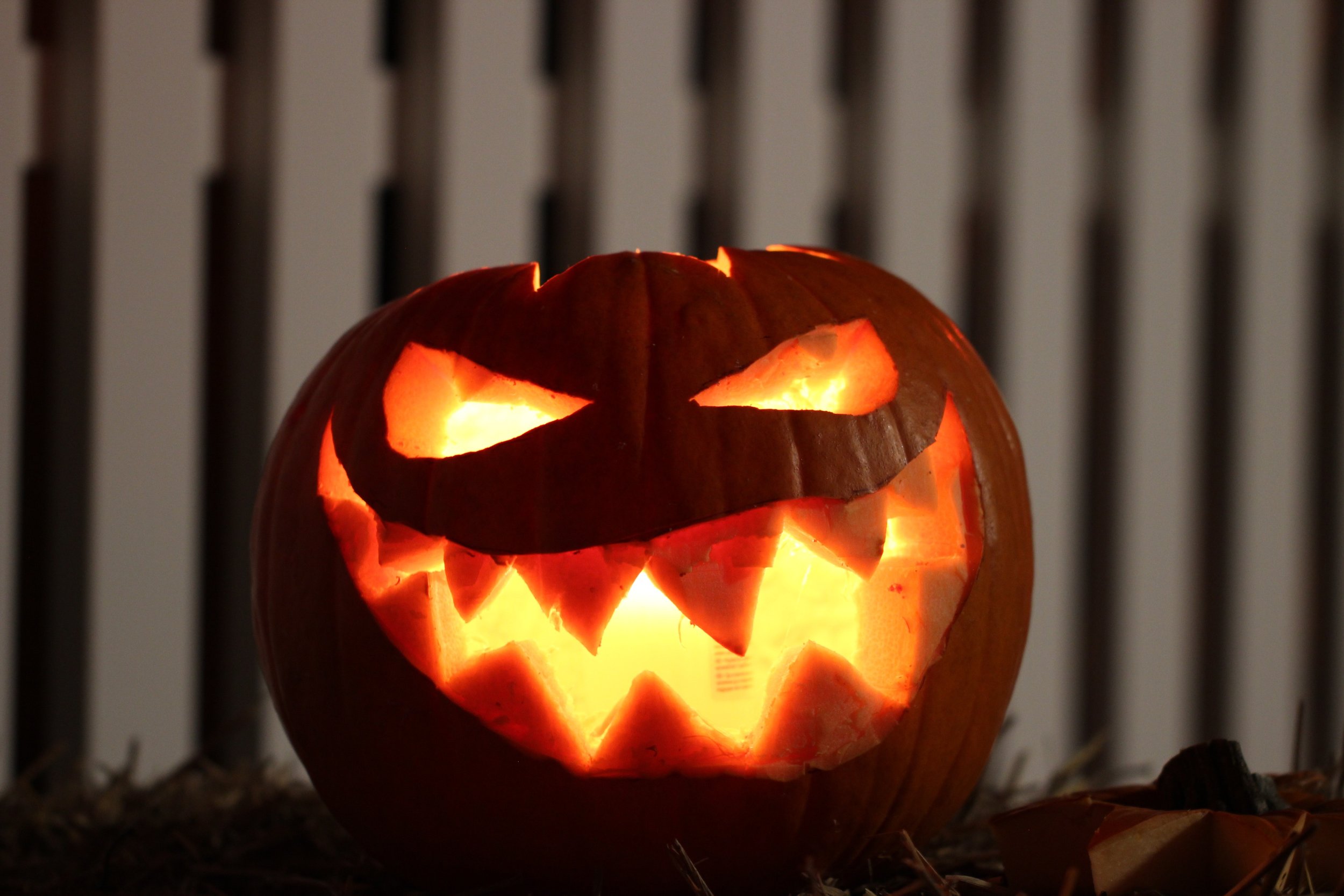The Perils of Editing Horror
Photo of a toothy jack-o’-lantern in front of a white picket fence by Pixabay on Pexels.
Horror fiction provides many possibilities for thrills and chills: the unexpected, the out of place, the unstoppable cosmic evil. It requires good pacing and an appropriate atmosphere, as well as something truly scary. The horror editor’s job is to make sure all those bits fit together into a writhing, squirming, terrifying mass.
Much of this is done through the usual means—plot development, pacing, story structure, character. However, some techniques used in horror are scary for a different reason: they perpetuate harmful -isms and stereotypes that hurt real people. The canon of classic horror has a serious amount of racism, antisemitism, and ableism baked in. H. P. Lovecraft was famously racist, naming his black cat something I won’t say or type. Bram Stoker’s Dracula used fears about encroaching eastern European (and particularly Jewish) immigrants, including blood libel. Films like Psycho and Halloween lean into the ableism of the mentally ill and neurodivergent as threats to “normal” people. As Angela Smith says in Hideous Progeny, “Eugenic assumptions about bodily form and biological inheritance were vital to the formation of classic horror’s visual and narrative conventions.” Watching out for these tropes is an important part of editing horror.
Demonizing people with a certain body type, or neurological difference, or different culture leads to real harm for real people. Over time, various groups have been “othered–stigmatized due to their inability to fit the able-bodied ideal of normalcy–and that this has also been used to discriminate against people based on their race, ethnic group, gender, and other social factors… anything we perceive as outside of normal is something to be avoided and feared” (O’Grady, 2021). Throughout history, these fears have been used to justify everything from snide comments to outright genocide.
How do you spot problematic elements? As with many things in editing, an important starting step is to read. Read about racism, antisemitism, ableism. Read about how it manifests in fiction. Angela Smith’s book is a good place to start. Some other resources are listed at the end of this post. Once you know more about what the stereotypes are, watch for them: the fat villain, the deformed or mentally ill murderer, the evil creature vanquished by a good, pure Christian youth. Be aware of history, of discrimination, of what’s come before. Then use that knowledge to build better fiction, and, hopefully, a better world.
Resources:
Bloodsuckers: Vampires, Antisemitism And Nosferatu At 100 by Noah Berlatsky, 2022.
Normal People Don’t Scare Me: A History of Ableism in the Horror Genre by Amie Kirby, 2020.
Midsommar's Ableism Resurrects the Dark History of Eugenics-inspired Horror by Emma Madden, 2019.
Ridding Your Monsters of Ableism by Faye Onyx, 2021.
Words Matter: Why I Embrace Anti-Ableist Language by Catkin O’Grady, 2021.
Villainizing Bodies and Minds: Ableism in Horror Movies by Sgarcia, 2018.
Resources: Conscious and Inclusive Language by Crystal Shelley, various dates.
Hideous Progeny by Angela M. Smith, 2012.
Antisemitism in Fantasy and Fairy Tales by Molly Rookwood, 2023.

